
|
In this Beginners Guide PCSTATS aims to give you a
basic visual acquaintance with the various ports and connectors on your PC, and a general understanding of what they are and how they work, hopefully bridging a circuit between the jargon and your hands-on knowledge of your own computer.
|
|
|
|
Home >
Reviews >
Beginners Guides >
Beginners Guide |
|
|
Printer, Serial, VGA, etc...
Parallel (printer) port: A 25 pin
connector used with printers and communication cables primarily. Used initially
for devices and applications that required faster data transfer than serial
ports could provide, the parallel port is on its way out now due to the success
of USB connectors. Over the years, several different modes have been developed
for transferring data through the port, including standard (SPP), enhanced (EPP)
and extended capabilities (ECP). All modern motherboards are capable of any of
these modes. The parallel port should be plugged and unplugged with the computer
powered off.
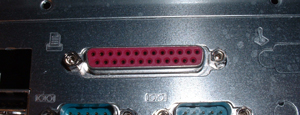
Serial Port: An early form of
external connector, still in use today, though becoming less common. Used to
connect a variety of devices, including mice, modems and communications cables.
Generally take the form of a 9-pin male connector (DB-9) but may also be found
as a 25-pin male connector (DB-25). In terms of data transfer rates, serial
ports are the slowest external port, generally topping off at 19.2Kbps. There
are multiple standards for serial port communications, the most common being
RS-232 and the newer RS-422.
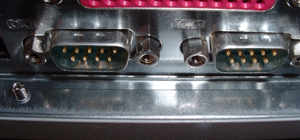
Analog Video Connector: A sort of
catchall term for the connector you plug your monitor into on the computer. A 15
pin female connector, VGA stands for Video Graphics Array, and is the baseline
standard for PCs to display images on a screen. Technically, the VGA standard
only covers displaying images at a 640x480 resolution, but different companies
have instituted a variety of different naming schemes for displaying resolution
above this. VGA remains the default standard, so it is used as an identifier.
Generally, the VGA connector will be on a graphics adaptor connected to the
motherboard, but it may well be integrated into the board also. VGA cables can be
safely plugged and unplugged while the computer is running. Some graphics
adaptors have more than one VGA connector, enabling the use of multiple
monitors.
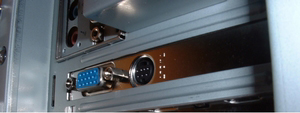
Audio Connectors: Connectors
built into an expansion card or the motherboard itself that allow audio input and
output. Generally speaking, any computer will have three audio connectors,
audio-in, audio-out and mic-in. These use the same 3.5mm stereo plugs that most
home audio devices use. Depending on the device, there may be more than one
audio-out connector for multiple channel sound. Though the colour coding can
vary, it is generally accepted that audio-out connectors are green or black,
mic-in ones are pink, and audio-in blue. All audio cables can be plugged and
unplugged without damage to a running computer.
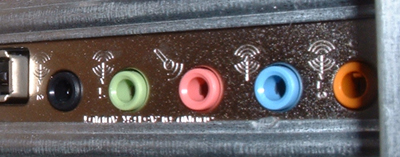
Joystick Port: Another
throwback to older computer designs, the Joystick port is a 15 pin female
connector that is traditionally attached to sound cards, but may also be
integrated into the motherboard. It's only function is to allow the use of
joysticks and game pads in computer games, and as you might guess, it is also
close to extinction due to the fact that most gaming devices now come with USB
connectors. Most soundcard manufacturers have stopped adding joystick ports to
their products.
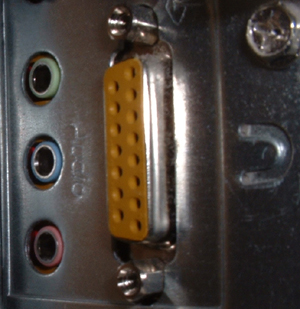
Ethernet port (RJ45, network card):
These ports, either built into a network adaptor or attached directly to
the motherboard, allow computers to communicate with other computers and devices
such as network hubs in a local network or over the Internet. They use category
5 (cat-5) network cable, and the Ethernet architecture. For more information on
how Ethernet works, and on networking in general see our introduction to home
networking Beginners Guide (see: Home Networking Guide). There are several standards
for the speed at which these ports can carry data. The most common are the
10base-T and 100base-T standards, which provide for data transfer speeds of
10mbps and 100mbps respectively, and are cross compatible (though the speed will
be limited by the slowest device). Ethernet ports come in two varieties,
straight wired and cross-wired, just as the cat5 cable comes in straight through
and crossover types. Straight wired ports (your computer's Ethernet port, for
example.) need straight through cable to connect to cross-wired ports (Hubs,
cable modems, etc.) and cross-wired cable to connect to other straight-wired
ports. Cross-wired ports are usually marked with an (x) next to the
port.
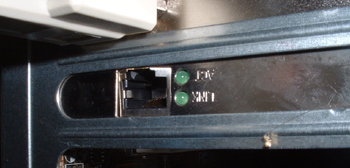
More ports and connectors on the next
page...
|
< Previous Page
|
© 2025 PCSTATS.com
Please respect the time and effort that went into creating each PCSTATS Beginners Guide, do not illegally copy. Thank you.
|
Next Page >
|
|

